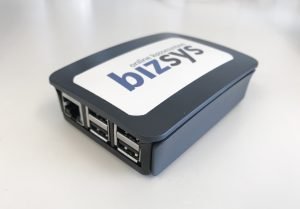11. Januar 2019
Raspberry Pi
HARDWARE
At Bizsys we use the Raspberry Pi to manage our point of sale system and have done so for several years. The small computer controls the bonus printer and ensures that it manages the encrypted credit card transactions on the installations, where our customers use an integrated Yomani payment card terminal.
What is a Raspberry Pi?
The Raspberry Pi is a small single-board computer the size of a matchbox. When a newer version of the Raspberry Pi comes out, we always aim to develop our software, so it matches the new model. The system constantly gets better and more stable. This also helps us prevent unnecessary crashes.
What operating systems can run on Raspberry Pi?
The Raspberry Pi can run with a variety of Linux-based operating systems and a series of other operating systems. The Raspberry Pi comes with a default OS called ´Raspbian. However, we use the Linux version named Ubuntu. By connecting the Raspberry Pi to the cash register system, there will be no need to plug all your devices to your PC, Mac or tablet. Thus, the Raspberry Pi ensures more flexibility, and creates outstanding opportunities when used.
How does the Raspberry Pi work?
The payment transaction itself is controlled through IP addresses, so that all transactions are verified on our central servers. The system is therefore incredibly flexible, which means, among other things, that our clients, such as cafeteria and restaurant owners, can have their waiters/waitresses carry mobile tablets, and the tablets do not have to be connected with any local printers or any central systems. They just must be connected to the same Wi-Fi as the Raspberry Pi.
Programming languages and Raspberry Pi
There are many types of programming languages Raspberry Pi enables you to use. One of the most used would be Python. Python is an interactive and object-oriented language with a very clear syntax. In order to fully use Python on a rasp, it is recommendable to use the IDLE prompt, which enables you to type in your Python commands.



